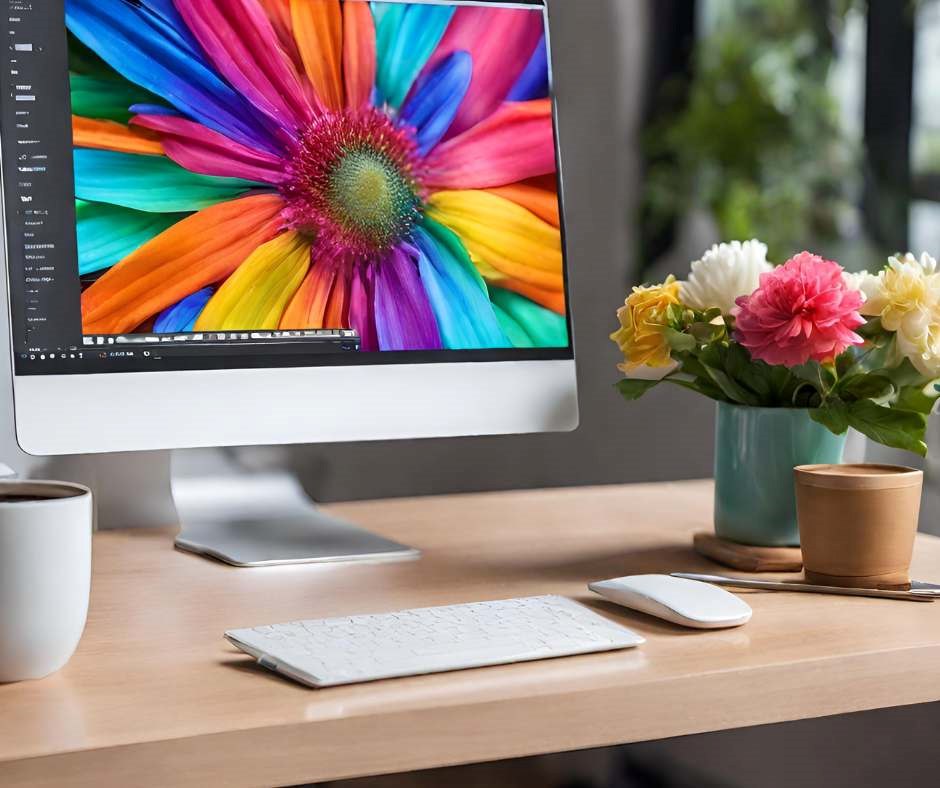“Voices Under Pressure is a participant in the Amazon Services LLC Associates Program, an affiliate advertising program designed to provide a means for sites to earn advertising fees by advertising and linking to Amazon.com. This means that if you click on affiliate links and make a purchase, we may receive a commission at no additional cost to you. We recommend products based on their relevance to the topics discussed and our belief in their quality. Our participation in Amazon’s affiliate program does not influence our content.”

The shift towards remote work has become more pronounced than ever before, resulting in a significant upsurge in the need for home office computers. These machines are not just any run-of-the-mill devices; they are the lifeblood of modern professionalism, demanding high performance, unwavering reliability, and user-centric convenience. In this meticulous roundup, we delve into an array of the best home office computers that fulfill the spectrum of work-from-home requirements. From sleek, budget-friendly models to the luxurious dominions of tech splendor, we’ve got you covered.
Want to buy a computer but don’t know where to start? Read this simple guide, and you’ll be ready for the next step: purchasing the computer that’s right for you.
Understanding Computer Specifications: A Simple Guide
Processor (CPU)
- What it is: Consider it the brain of the computer. It handles all the instructions you give your computer, from browsing the web to running software.
- Example: An Intel Core i5 processor is good for regular tasks, while an Intel Core i7 or i9 is better for heavy-duty tasks like video editing or gaming.
Memory (RAM)
- What it is: RAM is like a workspace the computer uses to get jobs done. More RAM allows your computer to work on more things at once without slowing down.
- Example: 4GB of RAM is okay for basic tasks, 8GB is standard for moderate multitasking, and 16GB or more is great for demanding tasks or keeping many tabs open.
Storage (Hard Drive/SSD)
- What it is: This is like a filing cabinet where all your files and programs are stored. SSDs are newer, faster types of storage that help your computer start up and open programs quickly.
- Example: 256GB storage is enough for most people, but if you handle large files or need lots of games or movies, 1TB or more is better.
Graphics (GPU)
- What it is: This handles how images are displayed on your screen. Gamers and designers need a better GPU for intense graphics work.
- Example: Integrated graphics are built into the CPU and fine for everyday use, while a dedicated graphics card, like an NVIDIA GTX, is needed for high-quality gaming or design.
Resolution
- What it is: This determines how sharp your screen image will be. Higher resolution means more pixels and clearer pictures.
- Example: 1080p (Full HD) is good for most needs, while 4K has four times the pixels and is great for graphic design and watching high-definition videos.
Ports (USB, HDMI, etc.)
- What it is: These are slots on your computer that let you plug in other devices.
- Example: USB ports connect flash drives or external devices, HDMI ports connect to monitors or TVs, and Thunderbolt 3 ports transfer data super-fast and connect to high-resolution displays.
Operating System (OS)
- What it is: It’s the main software that runs your computer. It lets you manage files and run programs.
- Example: Windows is common and runs on many PCs, macOS is only on Apple computers, and Linux can be customized for any need.
Battery Life
- What it is: This tells you how long your laptop can run on a full charge.
- Example: 5 hours might be enough for someone who is near an outlet often, but 10+ hours are better for people on the move.
Remember, the key is to match the computer’s specifications with what you plan to use it for. If you’re unsure about your needs, it’s often a good idea to go for a slightly more powerful computer than you currently need to be future-proof.
Now that you’ve grasped the technical knowledge to aid in your decision, you’re ready for the big leap: here’s a list of options ranging from the most affordable to the priciest, along with usage recommendations and who they’re best suited for. Happy shopping!
Computers for Finance – Accounting Jobs
Finance professionals need reliable machines that can handle complex spreadsheets, data analysis software, and multitasking with ease.
Entry-Level: HP Pavilion 15 15.6″ FHD (1920×1080)
HP Pavilion 15 15.6″ FHD (1920×1080) IPS Touchscreen Laptop | Intel i5-1235U 10-Core | Intel Iris Xe Graphics | Backlit Keyboard | WiFi 6 | USB-C | HDMI 2.1 | 12GB DDR4 512GB SSD | Win10 Pro

- Price: Range from $ 700 to $ 850
- Key Features: FHD (1920×1080) IPS Touchscreen Laptop | Intel i5-1235U 10-Core | Intel Iris Xe Graphics | Backlit Keyboard | WiFi 6 | USB-C | HDMI 2.1 | 12GB DDR4 512GB SSD | Win10 Pro
- Why It’s Good for Finance: Adequate performance for everyday accounting tasks without breaking the bank.
Mid-Range: Dell XPS 15
Dell XPS 15 9530 15.6” FHD+ (Intel 13th Gen 14-Core i7-13700H (Beat i9-12900H), 32GB DDR5 RAM, 1TB SSD, Arc A370M) Business Laptop, Backlit, Fingerprint, Thunderbolt 4, Wi-Fi 6E, Platinum Silver

- Price: Range from $1,500 to $ 2,000
- Key Features: Intel Core i7, 32GB RAM, 1TB, Arc A370M.
- Why It’s Good for Finance: High performance, excellent build quality, and a screen that’s easy on the eyes during long hours of work.
High-End: MacBook Pro 16-inch
Apple 2023 MacBook Pro Laptop M2 Pro chip with 12‑core CPU and 19‑core GPU: 16.2-inch Liquid Retina XDR Display, 16GB Unified Memory, 512GB SSD Storage. Works with iPhone/iPad; Silver

- Price: Range from $2,300 to $ 2,900
- Key Features: M2 Pro chip, 16GB RAM, 512GB SSD, 19-core GPU.
- Why It’s Good for Finance: Top-tier performance, with processing power for complex financial modeling and long-term durability.
Computers for Graphics Design Work
Graphic designers require a computer with a powerful graphics card, high-resolution display, and ample processing power to run demanding design software.
Entry-Level: Acer Aspire 5
Acer Aspire 5 Business Laptop, 17.3″ Full HD IPS Display, 11th Gen Intel Core i7-1165G7, Intel Iris Xe Graphics, Backlit Keyboard, Wi-Fi 6, Fingerprint Reader, Windows 11 (36GB RAM | 1TB SSD)

- Price: Range from $700 to $ 900
- Key Features: Full HD IPS Display, 11th Gen Intel Core i7-1165G7, Intel Iris Xe Graphics, Backlit Keyboard, Wi-Fi 6, Fingerprint Reader, Windows 11 (36GB RAM | 1TB SSD)
- Why It’s Good for Graphics: Sufficient specs to start in graphic design with an affordable price tag.
Mid-Range: Microsoft Surface Studio 2
Microsoft Surface Laptop Studio 2 (2023) – 14.4″ Touchscreen – Intel Core i7, 16GB RAM, 512GB SSD, NVIDIA GeForce RTX 4050, Windows 11, Platinum Color

- Price: Starting at $2,000
- Key Features: Intel Core i7, 16GB RAM, 512GB SSD, NVIDIA GeForce RTX 4050.
- Why It’s Good for Graphics: Impressive graphics capabilities and a touch-screen that caters to creative professionals.
High-End: HP 27 All-in-One
HP 27 All-in-One Touch Desktop 8TB SSD 64GB RAM Win 11 PRO (Intel 13th gen with 10 cores and Turbo Boost to 4.60GHz, 8 TB SSD, 64 GB RAM, 27-inch FullHD Touchscreen) PC Computer Essential Pavilion

- Price: Range from $2,399 to $2,700
- Key Features: Intel 13th gen, 64GB RAM, 8TB SSD, 27-inch FullHD Touchscreen
- Why It’s Good for Graphics: A formidable all-in-one that brings out the finest details in design work.
Computers for Bloggers
Bloggers need a computer that’s not only great for writing but also for photo editing, web browsing, and video streaming.
Entry-Level: Lenovo IdeaPad 3i
Lenovo 15.6″ Touchscreen 20GB RAM 1TB SSD IdeaPad 3i Laptop, Windows 11 Pro, Intel Core i5-1135G7 4-Core Processor, FHD 1920×1080 Display, SD Card Reader, HDMI, USB-C, Arctic Grey

- Price: Starting at $450
- Key Features: Intel Core i5, 20GB RAM, 1TB SSD, integrated Intel Core i5-1135G7 4-Core Processor, FHD 1920×1080 Display.
- Why It’s Good for Blogging: Provides a balance between performance and price for writing, editing, and content management.
Mid-Range: Apple 2023 MacBook Air Laptop with M2 chip
Apple 2023 MacBook Air Laptop with M2 chip: 15.3-inch Liquid Retina Display, 8GB Unified Memory, 256GB SSD Storage, 1080p FaceTime HD Camera, Touch ID. Works with iPhone/iPad; Midnight

- Price: Starting at $999
- Key Features: M2 chip, 8GB Unified Memory, 256GB SSD, 1080p FaceTime HD Camera, Touch ID.
- Why It’s Good for Blogging: Lightweight with strong performance and a stellar battery life for blogging on the go.
High-End: ASUS ZenBook 14 OLED
ASUS Zenbook Pro 14 OLED 14.5” OLED 16:10 Touch Display, DialPad, Intel i9-13900H CPU, GeForce RTX 4060 Graphics, 16GB RAM, 1TB SSD, Windows 11 Home, Tech Black, UX6404VV-DS94T

- Price: Range from $1,600 to $1,900
- Key Features: Intel Core i9, 16GB RAM, 1TB SSD, OLED 16:10 Touch Display.
- Why It’s Good for Blogging: High-quality display and powerful internals wrapped in a slim, portable body.
I hope you found this guide helpful, and if you’ve made your new computer purchase, congratulations on taking this exciting step!

